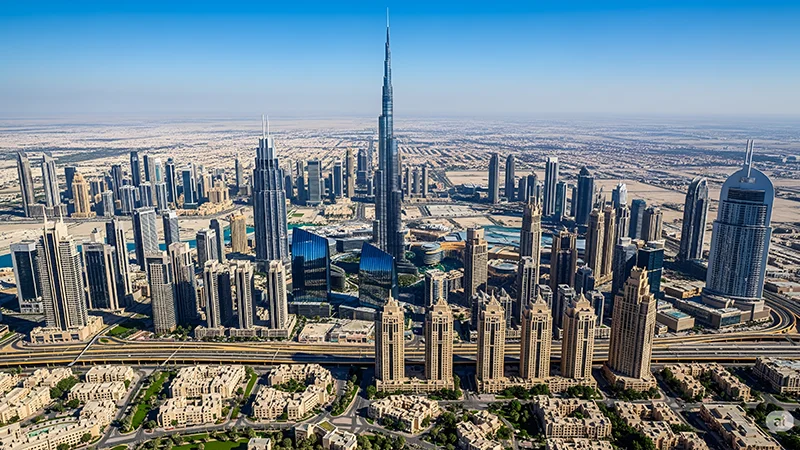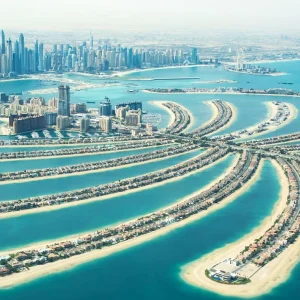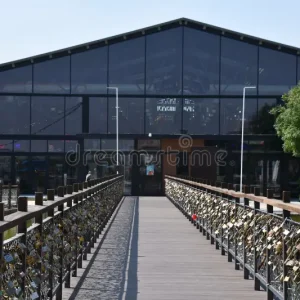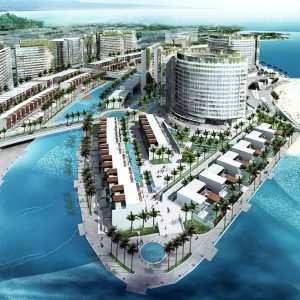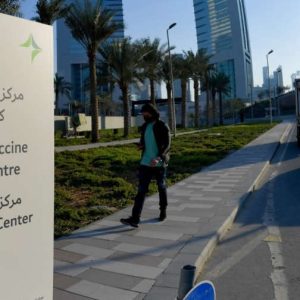Rent prices rise 5% in popular Dubai neighbourhoods, reflecting the city’s growing demand for prime residential areas and sustained interest from both local and international tenants. According to market observations, areas such as Downtown Dubai, Dubai Marina, Jumeirah Village Circle (JVC), and Business Bay have recorded the sharpest increases, driven by strong leasing activity, a thriving job market, and limited new supply in key zones. Despite the upward trend, experts say Dubai’s rents remain competitive compared to other global cities offering similar lifestyle amenities. The steady rise highlights Dubai’s continued appeal as a world-class destination for professionals, families, and investors.
Strong Tenant Demand Fuels Rent Growth
The rent prices rise 5% in popular Dubai neighbourhoods due to heightened tenant demand across the city’s most desirable locations. With Dubai’s population expanding rapidly and more expatriates relocating for new job opportunities, the housing market is experiencing consistent leasing activity. The real estate sector’s performance is closely tied to the city’s economic growth, and recent reports suggest strong demand in both luxury and mid-segment rentals.
Areas like Dubai Marina and Downtown Dubai continue to attract professionals who prefer proximity to offices, restaurants, and entertainment hubs. Jumeirah Village Circle and Al Furjan, on the other hand, are favored by families for their affordability and community-focused environments. The increased tenant demand in these neighbourhoods has placed upward pressure on rents, pushing average prices up by 5% since the last quarter.

Rent Prices Rise 5% in Dubai Neighbourhoods: Which Areas Lead the Increase
The rent prices rise 5% in popular Dubai neighbourhoods is most noticeable in the city’s prime zones. Downtown Dubai recorded some of the steepest jumps, with one-bedroom apartments now averaging AED 140,000 per year, up from AED 133,000 last quarter. In Dubai Marina, rents for two-bedroom units rose to around AED 180,000 annually, driven by high occupancy and growing interest from remote workers seeking waterfront living.
Business Bay also saw strong rental growth due to its central location and proximity to commercial centers, making it a favorite among young professionals. Meanwhile, suburban communities such as Jumeirah Village Circle and Arabian Ranches experienced steady increases as more families seek larger homes with outdoor space and amenities. Even newer developments like Dubai Hills Estate and Town Square reported growing rental activity as residents look for modern, well-connected communities offering value for money.

Supply and Demand Imbalance Drives Price Hikes
One major factor behind the rent prices rise 5% in popular Dubai neighbourhoods is the limited availability of new residential units in some sought-after areas. While Dubai continues to deliver new housing projects, most are concentrated in developing districts rather than in established communities. As a result, properties in mature neighbourhoods such as Downtown, Marina, and Jumeirah have seen their rental values climb steadily.
Industry experts note that many landlords have opted to maintain or slightly increase rents due to strong occupancy rates and consistent tenant renewals. Additionally, post-pandemic lifestyle changes—such as remote work and demand for larger living spaces—have shifted preferences toward villas and townhouses, where rental increases have been particularly noticeable.
Changing Tenant Preferences in Dubai
The rent prices rise 5% in popular Dubai neighbourhoods also reflects evolving lifestyle preferences among tenants. Many residents now prioritize accessibility, community facilities, and energy-efficient homes. Waterfront properties, family-friendly neighborhoods, and mixed-use communities remain the most in-demand.
Tenants are increasingly willing to pay a premium for convenience, whether that means living near a metro station, having access to gyms and pools, or being close to shopping and dining destinations. Properties that offer modern interiors, smart home features, and sustainable designs are also commanding higher rents compared to older developments. This shift in demand has further supported price growth in newer or renovated buildings across key districts.
Impact on Families and Long-Term Residents
As rent prices rise 5% in popular Dubai neighbourhoods, many long-term residents are reassessing their housing options. While most tenants are managing the increases by renewing their leases early or negotiating favorable terms, some are exploring emerging communities that offer better value. Areas like Dubai South, Al Khail Heights, and Mirdif are witnessing increased inquiries from tenants seeking larger homes without compromising on lifestyle quality.
The rise in rent also encourages some residents to consider home ownership, especially with attractive mortgage rates and flexible payment plans available in the market. This dual effect—rising rental demand and growing interest in buying—continues to strengthen Dubai’s property ecosystem.
Government Regulations Maintain Market Balance
The rent prices rise 5% in popular Dubai neighbourhoods is taking place under the careful regulation of the Dubai Land Department and the Real Estate Regulatory Agency (RERA). The RERA Rent Index Calculator continues to play a crucial role in ensuring that rent increases remain fair and within the legal framework.
Tenants can use the RERA calculator to verify whether a proposed rent hike aligns with official guidelines, while landlords rely on it to stay compliant with updated rules. This transparent system helps prevent sharp, unpredictable rent spikes and fosters trust between landlords and tenants. The existence of such tools is a key reason Dubai’s rental market remains stable even amid strong demand.
Rent Prices Rise 5% in Dubai Neighbourhoods: Landlord Perspective
For landlords, the rent prices rise 5% in popular Dubai neighbourhoods signals an opportunity to recover from the rent dips witnessed during the pandemic. Many property owners are seeing improved returns on investment and reduced vacancy rates. The rise in demand, coupled with the city’s ongoing development and infrastructure upgrades, is restoring confidence in Dubai’s real estate market.
Landlords are also becoming more strategic, offering flexible lease terms, furnishing options, and maintenance packages to attract long-term tenants. This approach not only maximizes occupancy but also enhances tenant retention, reducing turnover and maintenance costs in the long run.
Foreign Investment and Market Confidence
The rent prices rise 5% in popular Dubai neighbourhoods also ties into Dubai’s strong foreign investment appeal. As global investors continue to view the city as a safe and profitable market, demand for both residential and commercial properties has grown. The stability of the dirham, tax-free environment, and consistent infrastructure development make Dubai a prime choice for expatriates and property investors alike.
The recent rise in rental yields further enhances Dubai’s attractiveness to investors seeking steady income streams. For many, the 5% rent increase represents a healthy, sustainable level of growth that supports a stable, long-term investment environment without creating affordability challenges.
How Rent Increases Affect the Real Estate Ecosystem
When rent prices rise 5% in popular Dubai neighbourhoods, the ripple effects extend beyond tenants and landlords. Real estate agencies experience higher leasing activity, moving services see greater demand, and developers receive renewed motivation to launch new projects. The shift also influences commercial activities such as furniture retail, maintenance services, and home renovation businesses, which benefit from tenant relocations and property upgrades.
Overall, the rise in rental prices contributes positively to Dubai’s economic momentum, signaling strong consumer confidence and sustained growth in the city’s housing market.
Comparing Dubai with Other Global Cities
Even with the rent prices rise 5% in popular Dubai neighbourhoods, the city remains competitively priced compared to global hubs like London, Singapore, and New York. For the quality of life, infrastructure, and amenities available, Dubai’s rental prices are still considered affordable. Many expatriates find they can live in modern, spacious apartments or villas in Dubai for a fraction of what similar properties would cost in Western cities.
This affordability, combined with the city’s tax-free income policy and world-class services, continues to draw residents from across the globe. Dubai’s real estate remains one of the few major urban markets offering a blend of high living standards and reasonable rent structures.
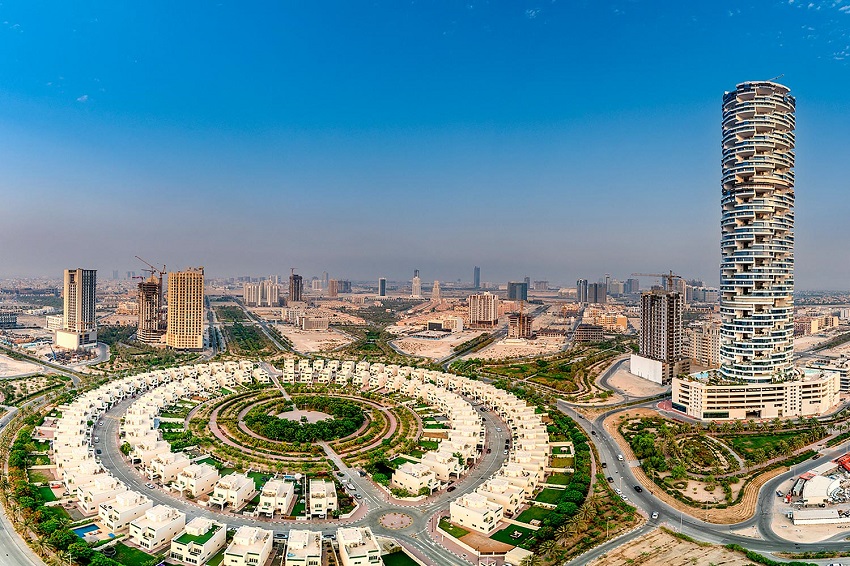
Market Outlook for the Coming Months
Industry analysts believe the rent prices rise 5% in popular Dubai neighbourhoods could continue into early 2026 if current trends persist. Factors such as population growth, employment expansion, and limited availability in prime districts are likely to maintain upward pressure. However, with several new residential projects nearing completion, some easing in rental growth is expected toward the second half of 2026.
Experts predict that as new developments in Dubai Hills, Jumeirah Village Triangle, and Expo City Dubai enter the market, rental competition will stabilize, offering tenants more options at varied price points. This balance will help maintain Dubai’s status as a well-regulated, investor-friendly, and tenant-conscious property market.
Tips for Tenants Managing Rent Increases
With rent prices rise 5% in popular Dubai neighbourhoods, tenants can take practical steps to manage the impact. These include renewing leases early, negotiating longer contract terms, and exploring rent-free incentives offered by landlords. Using the RERA calculator before signing renewal agreements ensures fairness and compliance. Tenants may also consider moving slightly outside city centers, where rents remain more stable, without compromising on accessibility or quality of life.
Another effective approach is to monitor community updates for upcoming residential projects—newer developments often offer introductory rental rates and modern amenities that appeal to long-term tenants.
Conclusion: A Balanced Market with Strong Momentum
The rent prices rise 5% in popular Dubai neighbourhoods marks another chapter in Dubai’s thriving real estate journey. While the increases reflect strong demand and limited supply in prime areas, the market remains healthy and transparent under the guidance of RERA and the Dubai Land Department. Tenants, landlords, and investors alike continue to benefit from a regulated system that prioritizes stability, fairness, and growth.
As Dubai evolves into a more dynamic global hub, rental prices will likely adjust in line with the city’s economic rhythm. For now, the 5% rise demonstrates confidence in the property sector, highlighting Dubai’s appeal as a world-class destination for both living and investment. With strategic development, fair regulations, and sustained demand, the city’s housing market is poised for continued success — ensuring that Dubai remains one of the most attractive places to live, work, and thrive in the world.
Do follow UAE Stories on Instagram
Read Next – Dubai’s Bold Move: Turning Daily QR Scans into a Cyber-Safe Routine

